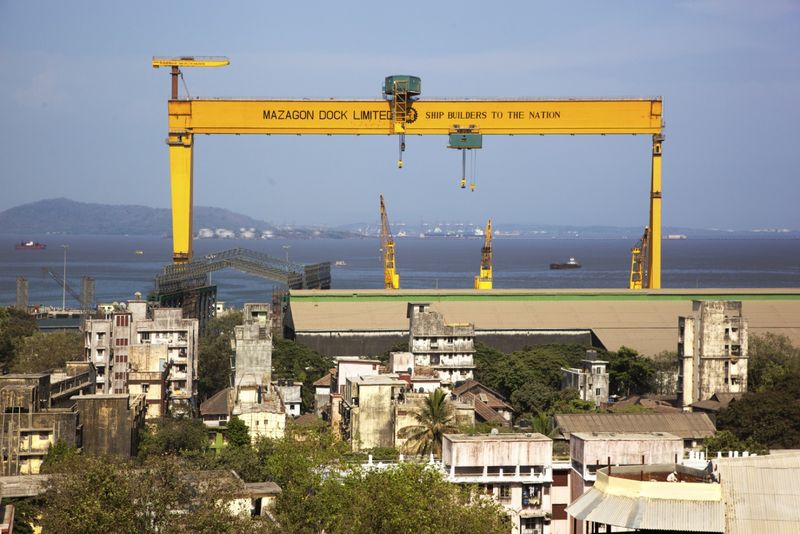
Hidden Histories of Mazgoan

Mazgaon and Wadibunder
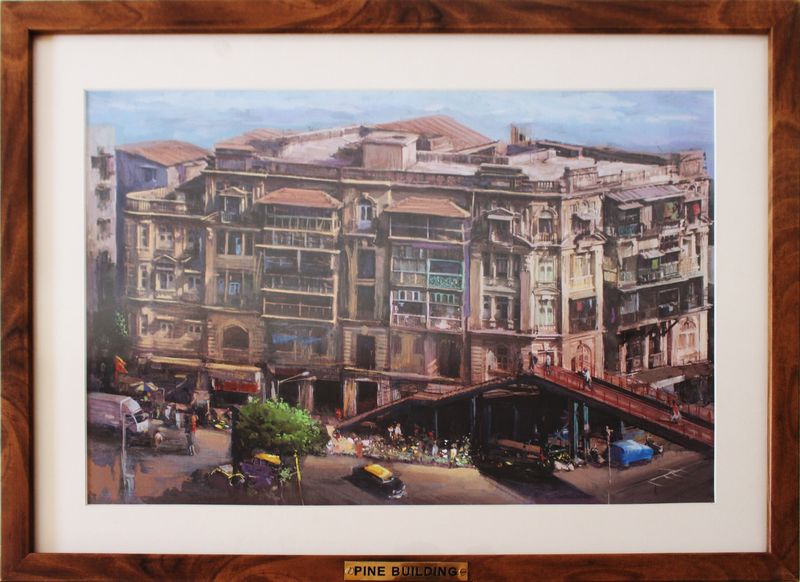

The word Mazagaon has been derived from the Sanskrit Matsya Gram, meaning fishing village. The original inhabitants were speculated to be tribals of Agari (salt-workers) and Koli (fishermen) tribes. However, folk etymology derives Mazagaon from the Marathi Maza Gaon, meaning my village. Another etymological claim suggests Portuguese origin, with the name borrowed from a city and fort of Mazagão in Morocco (now El Jadida) established by Portuguese in the beginning of the 16th century who totally evacuated to Brazil in 1769
One of Mazagaon’s oldest claims to fame was a variety of mango trees, which fruited twice a year. These mangoes were a celebrated commodity, and the Mazgaon mangoes find a mention as the ‘Mangoes of Mazagong’ in the epic poem Lallah Rookh by Thomas Moore in 1817. The mangoes would be packed for Mughal emperor Aurangzeb. Apparently a few such trees were extant well into the 20th century. The small island was rocky, with a hill rising at the north, and forming a cliff over the harbour. To see what Mazagaon might once have been, one has to visit any of the tiny rocky islands bearing mango trees and small villages further down the Konkan coast.
Once very fashionable, Mazgaon lost much of its charm after the more affluent British and Parsi residents relocated to Malabar Hill. Post independence, the area was generally considered to be a Catholic enclave.
Mazagaon is home to a large population of Catholics, Hindus, Parsis, Jews and other communities. With most Catholics migrating abroad, Muslims (particularly Dawoodi Bohras) have become the majority in terms of population, who have been moving from the more crowded neighbouring Bhindi Bazaar. They are developing many places in Mazgaon – Huge skyscrapers, newer architecture and spaces are replacing the old. It has virtually become a Bohra-Muslim neighbourhood.
A Catholic East Indian village can be found in the “Mathar Pacady” area. The migrants originally from Goa set up transit camps, which later became permanent residences. The Goan Clubs are an integral part of this area, which still function as transit houses for sailors and paid members.
Nearby lie the famous Mazagaon Docks, famed as a site of shipbuilding since the 18th century. It still builds warships for the Indian Navy and nearby is the Mazagaon Dock Colony which houses Angre House, Sarine House, Curry House and P & O Terrace. The Harbour Line station of Dockyard Road is the nearest railhead. The area is peaceful and quiet, unlike other parts of the city.
Mazgaon Docks
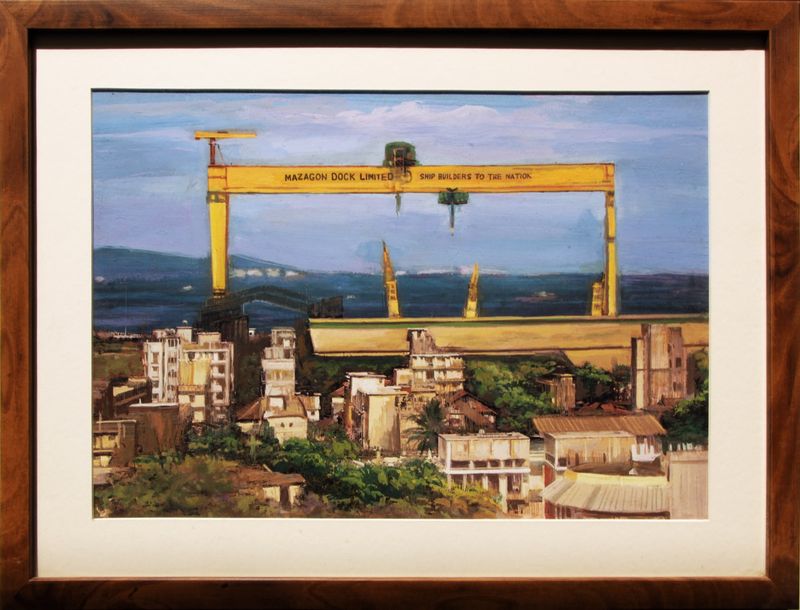
“These are the Docks on one side. It used to be Mahindra and Mohammed: J.C. Mahindra and K.C. Mahindra joined forces with Ghulam Mohammed and started Mahindra & Mohammed as a steel company in Mumbai. Two years later, India won its independence, Ghulam Mohammed left the company to become Pakistan’s first finance minister, and the Mahindra brothers ignited the company’s enduring growth with their decision to manufacture Willys jeeps in Mumbai. Soon, the company’s name changed to Mahindra & Mahindra…”
Mazagon Dock has come a long way from being a small repair yard in the late 18th century to the country’s leading Defence Shipyard capable of meeting the requirements of the Indian Navy towards its warship building programmes including submarines. The current order book position makes MDL, one of the most loaded shipyards in the world.
Mazagon Dock Limited is the India’s premier shipyard constructing warships as well as offshore platforms.
The Yard was established in the 18th century, and over the 200 odd eventful years, has earned a reputation for quality work and established a tradition of skilled and resourceful service. After its takeover by the Government in 1960, Mazagon Dock grew rapidly to become the premier war-shipbuilding yard in India, producing sophisticated warships for the Navy and offshore structures for the ONGC. It has grown from a single unit, small ship repair company, into a multi-unit and multi-product company, with significant rise in production, use of modern technology and sophistication of products.
Main activities are ship building, ship repairs and fabrication of offshore structures with facilities situated at Mumbai and Nhava. We have the capability to build warships, submarines, merchant ships upto 30,000 DWT and fabrication of well head platforms, process and production platforms and jack up rigs. For outfitting work, the company has a large number of workshops with sophisticated equipment and machines specific to hull fabrication and ship construction work.
Hasanabad
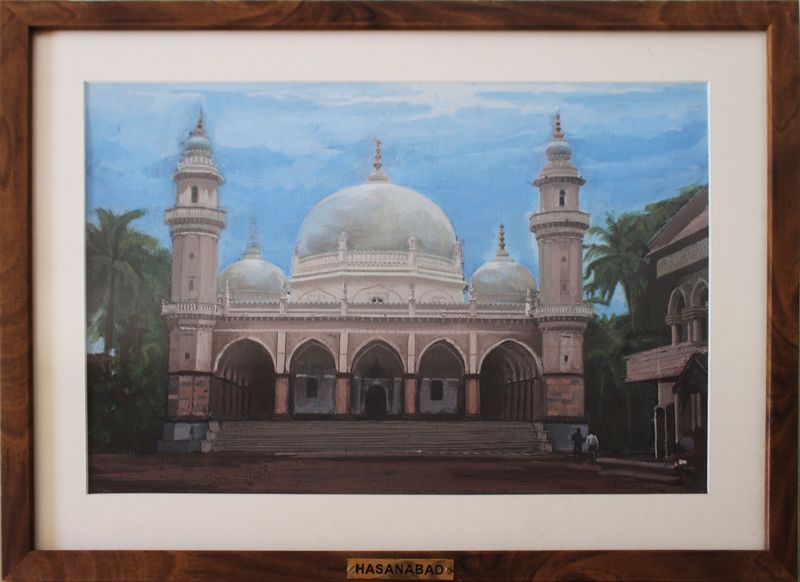
Hasanabad or Shah Hasan Ali’s Maqbara or Mausoleum is the resting place of 46th Imam – Aga Khan I, Imam of the Nizari Ismailite sect of the Shiite Muslims, circa 1884, Mazagaon.
Aga Khan, a resident of Iran arrived in Mumbai in 1846, and eventually became a permanent resident of the country and died in Mumbai in 1881. His funeral was attended by the consuls of Turkey and Iran as well as high-ranking British officials.
This marble mausoleum took a full three years to build and the minaret is said to be 19 feet high. A marble paean glows through the grime. Standing at the threshold of Hasanabad, it’s almost impossible to believe that this brilliant blue-domed building belongs to Mumbai. Its golden minarets evoke memories of Delhi or Hyderabad but not Mumbai’s Mazagaon.
Portuguese Bungalow:

The first Portuguese settlers were the Jesuits, who established a church in the 16th century. Notwithstanding their claim, in 1572 the King of Portugal granted the island in perpetuity to the de Souza e Lima family, from whom the D’Souzas of Mumbai trace their descent. When the Portuguese ceded the island to the British, there was a well-established population of Roman Catholics, mainly fishermen. Most were Hindu converts, although Eurasians were not uncommon. Some black African slaves brought by the Portuguese, known as Kaffirs, had also entered the ethnic mix. Some of their traditional wooden houses can still be seen, and are now protected heritage structures.
This site refers to one of the only four remaining original examples of Portuguese architecture. It is unoccupied except for Security guards.
Mathar Pacady Lane

Tucked away in a quiet corner of the concrete jungle is Matharpacady (pacadi means village in Marathi). Back in the early 1900, this quaint little pocket, in the heart of Mazagoan, was called Saiba Gulli as 90 per cent of the residents were Catholics. It has survived the ravages of time and today is close to disintegrating following the nexus between local politicians and the builder lobby that wants to construct apartment blocks here.
The place still has a very Goan-Portuguese feel. Most of the houses are more than a century old and cannot be demolished without government approval. However, a seven-storey building was recently built on the remains of a house whose inmates had all died. Although it falls in the Grade 3 category of protected monuments, residents know it’s easy to find legal loopholes.
Mathar Pacady Eyemard Cottage:
Eyemard Cottage has been renamed after St. Julian Eymard, the Apostle of the Eucharist.
Brother Peter Paul, who works in the office of the Blessed Sacrament Provincial Order, explains, “Many people died in the 1875 plague. Our prayers to the saint saved the remaining few. Along with his two brothers, he is immortalised in this building that came up on land donated by the Edward Miranda family in 2006. Young and old still pray here. But a well, built by the original settlers, was sealed after the 1992 communal riots.”
According to another resident John Borges who lives here in Matharpacady since 1958, there have been a few changes. Earlier they had the litanies in Latin; but keeping in tune with the times, the music has also changed. However, the essence of thanksgiving still remains the same. Now the younger generation actively participates for they feel it is an important part of their spiritual heritage and they want to keep in touch with their roots.
Matharpacady that was once beautiful with mango, plantain, and neem trees has turned into a dumping area with godowns, warehouses and garages in the vicinity. The lack of conservation knowledge, ill-advised repairs, loss of original building materials, unaffordable maintenance costs, threaten the survival of Matharpacady heritage village amidst the towering skyscrapers. There are now in Matharpacady three buildings – Manish Apartments, Monark Apartments and Sakhari Apartments which have come in place of some of the village’s original structures.
Matharpacady has been fast losing its identity and socio-cultural history of over 300-odd years. One wonders if Matharpacady will survive. There are talks of transforming Matharpacady into tourism region.
Mathar Pacady Club, Mathar Pacady
The Matharpacady Club, a grand 100 year old structure, is amid a pile of rubble now. The Club celebrated its centenary in 2006, but sadly before it could be protected under heritage listings, the Duartes who owned the place sold it to a builder.
The first floor of the club has been demolished and only the ground floor remains with legal dispute between the builder and the club management. They are not fighting the loss of heritage; they are in fact willing to let go of the place if they are given a similar 2,000 sq. ft. space in the new structure, a shop and Rs 30 lakh too.
When construction pits were excavated, electricity and water supply were cut off. Hence the senior citizens of the area abandoned their evening haunt. The club now looks like a broken-down old-age home where the card tables and carom boards gather dust. There is rubble everywhere and during monsoon rainwater pours in.
Mathar Pacady Oart Holy Cross Oratory

The 125-year chapel, Mathar Pacady Oart Holy Cross Oratory, stands tall. The feast of St Rock is celebrated here every year on May 1.
The residents built the Holy Cross Oratory in this village in the late 1890s when Bombay was struck by plague. They offered prayers to St Roque – the patron saint of epidemics, for the protection of their loved ones. And legend has it that not a single Mathar Pacady resident fell a prey to that epidemic.
The tradition of praying at the Holy Cross Oratory has been going on for more than a century and has been kept alive by the residents who gather every evening even today and offer prayers and thanksgiving for protecting them through good and bad times.
According to a resident St John Valladares, this faith in the Cross has been kept alive for 87 summers. Every year from April 22 onwards, the community gathers at the Cross for thanksgiving with a rosary, litanies to Our Lady, the Holy Cross and St Roque, that culminate into a feast of the Cross on May 1. Everyone from grandparents to toddlers – all join in the prayers; and it is a way of thanking God for the well-being of all. Prayers are also offered for a good monsoon, which is another tradition from the community’s farming days.
The Oratory falls in the Grade 3 category of protected monuments along with the rest of the Mathar Pacady area and is also deemed a World Heritage Site.
D’mello Road
The Docks were close by; if you see very closely, you will find names of the streets named as Karvad street, Kalyan street, Kochin street, Ahmedabad street etc. based on where the goods were coming from. Wadibunder was supposed to be the area where shipment goods were taken inside and outside the docks, now that the containers have come, the whole thing has changed.
Some of the Warehouses are more than 150 years old, and most of them would be demolished soon in the coming years due to expansion and development and progress. Now there is heavy encroachment. Earlier there was a greater volume of slums, now in the last 4 to 5 years most of them have been removed.
If you stand in front of Burma Shell Petrol, you see they had this bogey sort of a thing. You will see that the railways containers were only for oil and petrol, which went inside the docks and came out only carrying oil. Now, Its not being used much, because you see, earlier, the trams were there, you had the crossway going in the afternoon and in the mornings and the entire traffic used to stop. Now the partition has come up.
BPT Railway Tracks
The tracks were part of the BPT Railways, which were functional before the other suburban railway lines. Earlier there were lots of them, now they have kept only one line, and its not really functional. They have built the BPT Road over what were the railway lines (tracks). These railways were started in the 1915, much before the Central or the Western railways.
There were so many trains, they even had a turntable, to keep the bogey or container on it, and whichever line you wanted to take, it could be rotated to match that.We spent our childhood playing in the rail yard. We used to play cricket there, we used to fly kites, even catch kites there. But all the railways are gone now.
There was one train they had which started from Apollo Bunder, where you got off a ship and directly took a train, which took you to Delhi, or wherever in the frontiers. That is also how the railways was used back then. When M. K. Gandhi came back from South Africa, he would have come by ship here in Bombay; the ticket for the ship and the train were same.
Koli House

Kolbhat, Palva Bunder, Dongri, Mazgaon, Naigaum and Worli were among the islands the Kolis gave their names to. Kolbhat was distorted to Colaba; Palva Bunder became Apollo Bunder. The temple to Mumbadevi in Dongri gave rise to the name of the city. One of the smaller islands near Colaba, variously called Old Man’s Island and Old Woman’s Island, was a distortion of the Arab name Al-Omani, given for the same fishermen who ranged as far away as the gulf of Oman.
In Marathi, Koli means the originally heterogeneous marginal tribe-castes that took late in history to agriculture and were often press-ganged for porterage in army service. The same word also means spider and fisherman, presumably because the fisherman makes and uses a net to catch his prey as a spider his web.
With settlements dating back at least 400 years, the Kolis were the earliest inhabitants of the archipelago now known as Mumbai. They are thought to be members of the Kul tribe, which migrated from the mainland mass of Aparanta at beginning of Christian era or earlier. Kolis occupied the islands in successive waves and engaged in husbandry and fishing.
Around 38 Koliwadas exist in the region today, having survived periods of Hindu colonization around the end of the 13th century, Muslim rule until the mid-16th century, foreign colonization first by the Portuguese and then by the British, and the explosive expansion of modern Mumbai.
“This Mazgaon Koliwada house, is a particular architecture of the time. People built their own houses. The only kind of common feature you will find with most of these kind of houses is the wooden ‘V’ or the upside down ‘V’ and the grills. It is called Vaithi House, and the people who stay were Koli. This is a typical Koli building; In Yari Road, there still exist other types of Koli buildings and the Koli Houses – small houses, with the balcony belongs to the beginning of the 20th century, and the grills particularly reminiscent of the time. A consistent feature of these houses are verandahs with photographs of their family members on display.”
Behind the House is the Naqwa Road, named after the Koli figure Narsool Naqwa. They would get one of the Larger and spectacular Ganpatis of the area, which would be a major attraction of the time. They are fisherfolk, there family would sell fish, and the sons or the newer generation, which were highly educated, went to the best of schools. Their son was in school with me initially and then he went to Saint Mary’s. This is not their house, but the one behind this Koli House.”
The Kolis’ close connection with the history of Mumbai is evident in the city’s place names. The city’s original name of “Manbai,” “Mambai,” or “Mumbai” by some accounts derives from “Mumbadevi,” the patron deity of the Kolis. The earliest settlements in Mumbai were the koliwadis, which were named after local trees or other natural elements, as Kolis were then nature and tree-worshipers. For example, “Parel” is said to derive from “Padel,” the local name of a trumpet-flower tree. “Colaba,” Mumbai’s primary tourist and historical center, derives from “Kola-bhat,” which means “Koli estates.”
In the 17th century, Queen Elizabeth formally bestowed land tenure to the “Kolis of Dharavi,” an event commemorated in documents and a copper plate currently housed in a Mumbai museum. The Queen also gifted pistols to three Koli residents — Banduk Patil, Bapuram Koli and Kuptun Mangalaya Koli — as security against pirates that used to rob fishing boats.
The development of the modern city slowly marginalised these people of the sea. By 1770, they were already removed from Dongri by the East India Company. This historical process of elimination eventually pushed them to the strand near Cuffe Parade, from where they plied their ancient trade of deep-water fishing. The Backbay reclamation of the 60’s would have further marginalised them had they not approached the courts to stay the reclamation. Now their settlements are protected by law.
Mazgaon Gardens
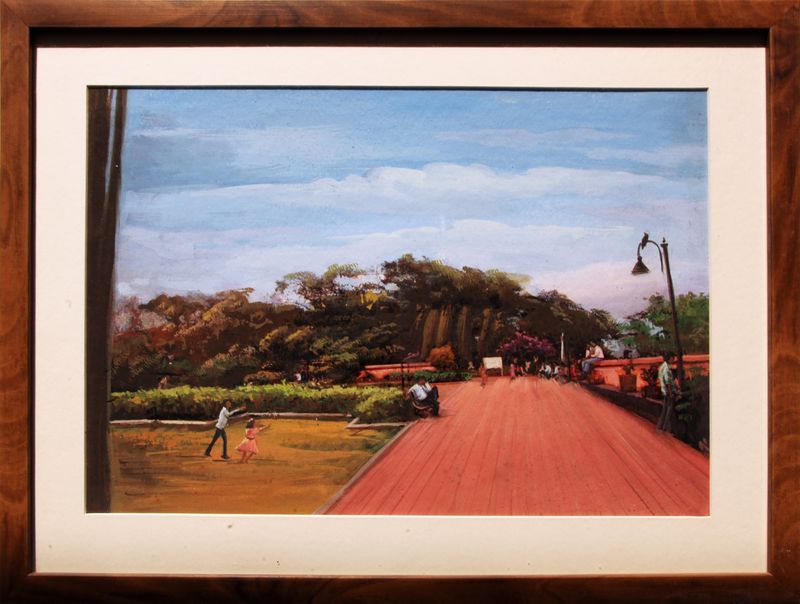
The Joseph Baptista Gardens, locally known as the Mazagaon Gardens, is a 1.5 acres (0.6 ha) park in south Mumbai in Mazagaon.[1] It lies atop a hill, the Bhandarwada Hill, and offers a panoramic view of the Mumbai harbour and the southern business district of the city. Beneath the gardens is a water reservoir, constructed by the second Municipal Commissioner of Bombay, John Hay Grant between 1880–1884. The gardens are located behind the Dockyard Road railway station, at an altitude of 32 metres (105 ft). Shortly after India’s independence in 1947, the gardens, was named after Joseph Baptista, an Indian freedom activist.
Old Gloria Church Cross in BPT Area
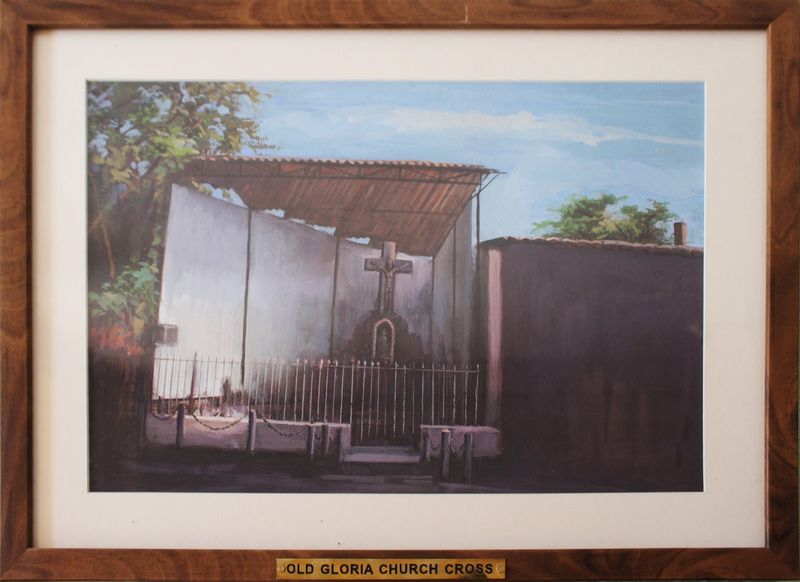
The original Gloria church, Nossa Senhora da Glória, was built in 1632 from a donation by the de Souza family. It was destroyed in 1911, being replaced two years later by a new Gothic church of the same name built a opposite the Byculla Railway Station, a kilometer away. When a Church is shifted, The Cross is replaced. So what remains to commemorate the original location of the Old Church is the original Cross, revered and maintained by a small Catholic community living in Bob’s Bungalow in front of the Site.
Barber Shops, Dockyard Road Station
These Barbershops are a historic landmark of Dockyard Road. Built under the Railway Bridge, these shops are atleast 100 years old. They are the descendants of the Barbershops near the Docks that specialized in the facilities of Hamaams. The Hamaams may be gone but these shops still service a lot of clientele that comes from the docks.
People used to come very early morning to work at the Docks, or very late in the evening from it. Once upon a time, everywhere under a brigde you could find Barbers, the fact that they still exist is a big thing. They have been there for more than 80 to 90 years. There used to also be Saloons, some of which had their own Hamams, but now they no longer exist.
Ashok Karande, Cobbler, Mathar Pakadi:
There are no commercial establishments in Mathar Pacady. The only exception is the decrepit shop of cobbler Ashok Karande, built by his forefathers more than 100 years ago. He has been managing it since the 1970s.
Priest at Patel Agiyari, Mazgaon Village
The Parsi Agiyary is the oldest Agiyary of Mathar Pakardi. The Parsis were very fashionable people, whenever you come to the Agiyary, you find the latest and the fanciest cars, or a motorbike etc.
Mazagaon was occupied by the Sidi оf Janjira, an admiral in the Mughal Navy in 1690. It is said that he was driven away а year later by the Rustomji Dorabji, who organised the fishermen in Dongri into а fleet. Rustomji was given the title ‘Patel’ after this feat, and his descendants have remained the only Parsi family of Patels.